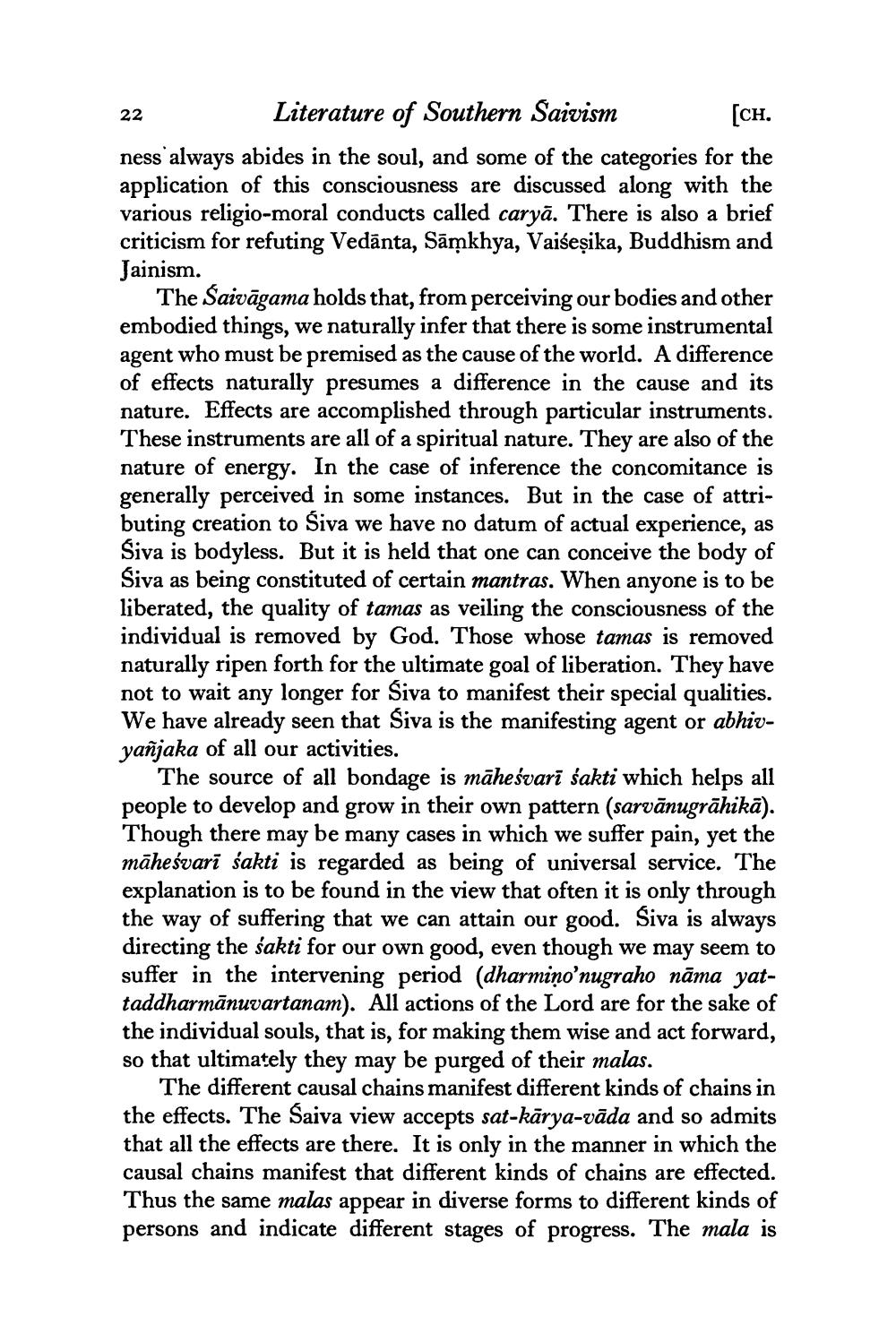________________
22
Literature of Southern Saivism [cH. ness always abides in the soul, and some of the categories for the application of this consciousness are discussed along with the various religio-moral conducts called caryā. There is also a brief criticism for refuting Vedānta, Sāņkhya, Vaiseșika, Buddhism and Jainism.
The Saivāgama holds that, from perceiving our bodies and other embodied things, we naturally infer that there is some instrumental agent who must be premised as the cause of the world. A difference of effects naturally presumes a difference in the cause and its nature. Effects are accomplished through particular instruments. These instruments are all of a spiritual nature. They are also of the nature of energy. In the case of inference the concomitance is generally perceived in some instances. But in the case of attributing creation to Siva we have no datum of actual experience, as Siva is bodyless. But it is held that one can conceive the body of Siva as being constituted of certain mantras. When anyone is to be liberated, the quality of tamas as veiling the consciousness of the individual is removed by God. Those whose tamas is removed naturally ripen forth for the ultimate goal of liberation. They have not to wait any longer for Siva to manifest their special qualities. We have already seen that Siva is the manifesting agent or abhivyañjaka of all our activities.
The source of all bondage is māheśvarī sakti which helps all people to develop and grow in their own pattern (sarvānugrāhikā).
Though there may be many cases in which we suffer pain, yet the māheśvarī sakti is regarded as being of universal service. The explanation is to be found in the view that often it is only through the way of suffering that we can attain our good. Siva is always directing the sakti for our own good, even though we may seem to suffer in the intervening period (dharmiņo’nugraho nāma yattaddharmānuvartanam). All actions of the Lord are for the sake of the individual souls, that is, for making them wise and act forward, so that ultimately they may be purged of their malas.
The different causal chains manifest different kinds of chains in the effects. The Saiva view accepts sat-kārya-vāda and so admits that all the effects are there. It is only in the manner in which the causal chains manifest that different kinds of chains are effected. Thus the same malas appear in diverse forms to different kinds of persons and indicate different stages of progress. The mala is




